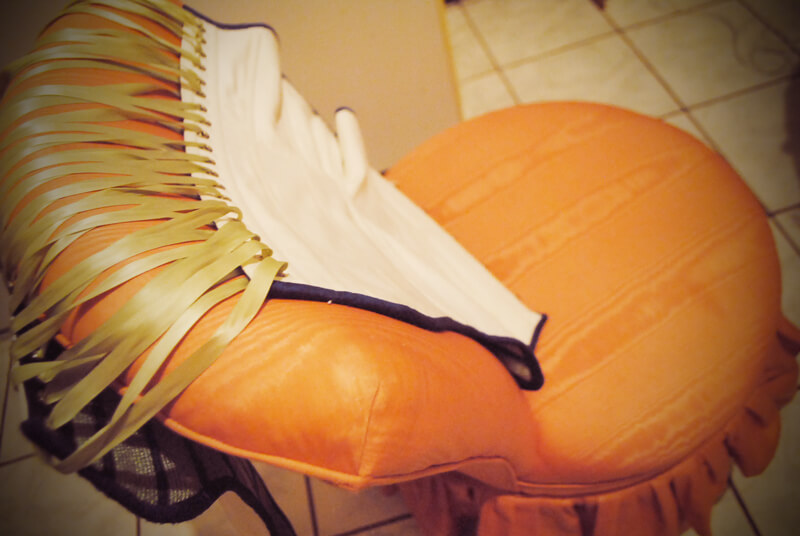Corset Care 101: What to Do While Wearing a Corset
So you want to wear a corset, and make sure you take good care of it to prolong its life. There are a few steps you can take during and immediately after wearing your corset to minimize wear and the need for costly cleanings.
One of the most basic pieces of corset care advice is to wear your corset with another layer between it and your skin. The reason for this is that your sweat and the natural oils in your skin rub off onto the lining. Ultimately it's less wear on the corset to avoid both the sweat and oils, and the frequent cleanings it'll lead to.

A camisole like this makes a good corset liner. To wear with an overbust, tuck the straps in. Trousers are optional. Photo: Antonio Abadia, Corset: Electra Designs, Model: Victoria Dagger
How practical wearing a lining is will depend heavily on your outfit: if it's a waist cincher or underbust, you may already be wearing it as an outerwear piece and therefore ahead of the game. (Know that the garment underneath will get creased from the compression.) A sweetheart corset can be worn as a top by itself. If you're wearing your corset as a foundation piece, the weather may not permit an additional layer between it and your skin.
Originally a “chemise” would've been worn next to the skin under the corset; today, you can wear a simple camisole or tshirt. Your corsetiere may even sell tube tops fitted to be worn under the corset with no straps or sleeves to interfere with your styling choices. The fabric should be lightweight, breathable, and easy to wash: a t-shirt jersey-type fabric (cotton or a cotton-spandex blend) is a safe bet. A rayon-type fabric (rayon, modal, bamboo rayon, etc) would also be very comfortable, though more difficult to care for.

To keep laces secure and out of the way, tuck the ends into the bottom of your corset. Photo: Joel Aron, Corset: Dark Garden, Model: Kristin.
One mistake many corset wearers make is wearing their laces tied around their waist. This actually abrades the fabric of the corset. If you don't like to leave your laces danging, separate the “bunny ears” bow at the waist in two and tuck the lace ends under the bottom of your corset. On a related note, when it's time to take your corset off, always remember to loosen the laces before unfastening the busk.
If you find yourself needing to replace the lacing itself, polyester ribbon can be purchased from any fabric or craft store. Even if your corset wasn't originally laced with ribbon, the polyester actually makes for very strong lacing. Measure how long the original laces were, and adjust if you felt they were too long or too short. It's always easier to cut them shorter, though, so it's safer to err on the side of “too long,” otherwise it may become difficult to put your corset on. Buy ribbon that is at least 1/4” wide; 5/8” or wider ribbon creates a more sumptuous look but also adds considerable bulk.
After you take your corset off, let it air out, breathe, and relax. Drape it over a hanger or the back of a chair. The fibers will relax back into shape, and, well, the fresh air will do it good, scent-wise. If you're waist training or participating in an event that calls for several consecutive days of corset wearing, try to alternate corsets. Like your bras or shoes, your corset will break down noticeably faster if you don't give it any time off. The fabric, boning, and laces are all under a considerable amount of physical stress while you're wearing it, after all. You can also delicately wipe down the lining of your corset with a damp cloth after you take it off, to help gently remove any oils or sweat that are on the surface.
Stay tuned for future installments on storing and cleaning your corsets! Let me know in the comments if you have other corset maintenance questions or ideas you'd like to see addressed in future posts.










